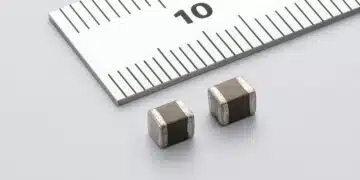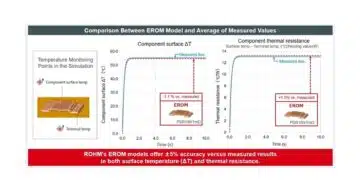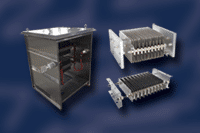source: Vishay news
MALVERN, Pa. — June 20, 2016 — Vishay Intertechnology, Inc. (NYSE: VSH) today announced that its Vishay Milwaukee GRE1, GRE2, and NGR grid resistors are now available with a new stainless steel resistive element material optimized for applications requiring a more stable TCR.
Vishay grid resistors utilizing the new magnetic stainless steel material provide a TCR of ± 365 ppm/°C and deliver superior performance and corrosion resistance for dynamic braking resistors, testing load banks, motor control, and other applications requiring a minimal change in resistance as the elements increase in temperature. Devices utilizing a non-magnetic stainless steel alloy offer a TCR of ± 930 ppm/°C, and are optimized for harmonic filtering and current limiting applications, in addition to those requiring reduced noise emissions, such as dynamic braking in elevators and other industrial equipment.
Vishay’s GRE1 and GRE2, series resistors combine high power ratings up to 24 kW with operating temperatures to +400 °C and a robust design. Featuring a steel plate element, ceramic insulators, and multiple taps, the devices provide high reliability with a welded construction and double insulation for maximum cooling efficiency. To provide ground fault, overvoltage, and short circuit protection for generators and transformers in wye (star) configurations, NGR devices feature GRE1 resistors mounted in a rugged, weatherproof IP23-rated enclosure with high-temperature performance to +760 °C.
Production quantities of grid resistors with the new stainless steel resistive elements are available now, with lead times of three to four weeks.
































